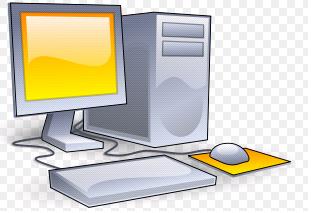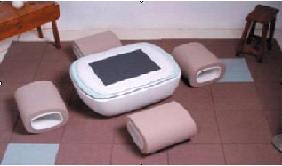 A personal computer (PC) is a computer whose original sales price, size, and capabilities make it useful for individuals, intended to be operated directly by an end user, with no intervening computer operator. A PC may be a home computer, or may be found in an office, often connected to a local area network. The distinguishing characteristics are that the computer is primarily used, interactively, by one person at a time. This is opposite to the batch processing or time-sharing models which allowed large expensive systems to be used by many people, usually at the same time, or large data processing systems which required a full-time staff to operate efficiently. The most common operating systems are Microsoft Windows, Mac OS and Linux, while the most common microprocessors are the x86 andPowerPC CPUs. Software applications for personal computers include word processing, spreadsheets, games, and a myriad of personal productivity and special-purpose software. Modern personal computers often have high-speed or dial-up connections to the Internet, allowing access to the World Wide Web and a wide range of other resources. While early PCs owners usually had to write their own programs to do anything useful with the machines, today’s users have access to a wide range of commercial and free software which is easily installed. The coming convergence of larger devices and the Personal Digital Assistants (PDAs), mobile phone and wearable computer markets which have similar functions, operating systems and even the same components, will decide if personal computer will refer to these devicesects. . A minimal setup of a typical contemporary desktop computer would be:-
A personal computer (PC) is a computer whose original sales price, size, and capabilities make it useful for individuals, intended to be operated directly by an end user, with no intervening computer operator. A PC may be a home computer, or may be found in an office, often connected to a local area network. The distinguishing characteristics are that the computer is primarily used, interactively, by one person at a time. This is opposite to the batch processing or time-sharing models which allowed large expensive systems to be used by many people, usually at the same time, or large data processing systems which required a full-time staff to operate efficiently. The most common operating systems are Microsoft Windows, Mac OS and Linux, while the most common microprocessors are the x86 andPowerPC CPUs. Software applications for personal computers include word processing, spreadsheets, games, and a myriad of personal productivity and special-purpose software. Modern personal computers often have high-speed or dial-up connections to the Internet, allowing access to the World Wide Web and a wide range of other resources. While early PCs owners usually had to write their own programs to do anything useful with the machines, today’s users have access to a wide range of commercial and free software which is easily installed. The coming convergence of larger devices and the Personal Digital Assistants (PDAs), mobile phone and wearable computer markets which have similar functions, operating systems and even the same components, will decide if personal computer will refer to these devicesects. . A minimal setup of a typical contemporary desktop computer would be:-
Computer case with power supply (usually sold together)
Motherboard
Processor with a heat sink and fan (usually sold together)
At least one memory card
Mass storage
Keyboard and mouse for input
Monitor for output




